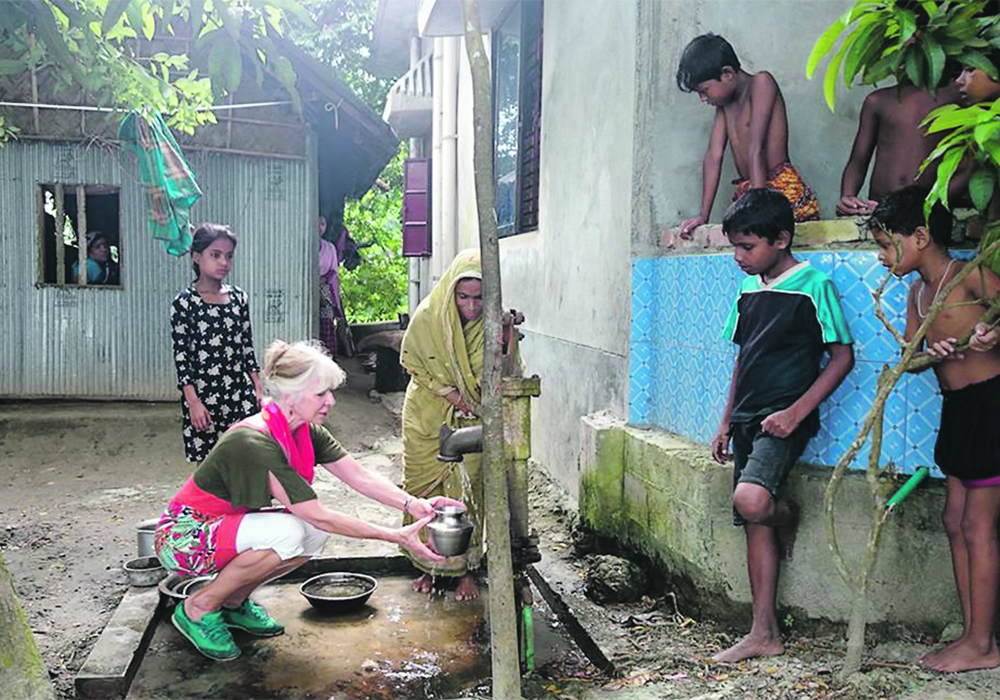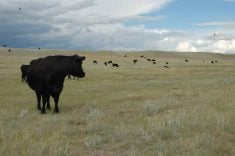Bangladesh plans a major clinical study to confirm eating lentils grown in Saskatchewan can treat arsenic poisoning
The Bangladeshi government wants more information about Saskatchewan lentils.
For a number of years, scientists in Saskatchewan and Bangladesh have studied lentils and how they can help people who drink water that’s contaminated with arsenic.
The government of Bangladesh is planning a major clinical study, with 8,000 people, to confirm that eating Saskatchewan lentils is an effective treatment for chronic arsenic poisoning.
“That… was driven by the Bangladeshi government. So that was very encouraging,” said Judit Smits, a toxicologist and professor emeritus in the faculty of veterinary medicine at the University of Calgary, who has been involved in the research.
Read Also

Volatile temperatures expected for this winter
DTN is forecasting a lot of temperature variability in the Canadian Prairies this winter. Precipitation should be close to average.
“That was a huge surprise and very positive.”
Arsenic poisoning is a massive problem in parts of the developing world. The World Health Organization has estimated that 70 to 100 million people are affected, making it the “largest human toxicity problem in the world”, Smits stated on her U of C website.
Arsenic poisoning can cause darkened spots on skin, weakened immune systems, respiratory diseases, diabetes and even cancer.
In Bangladesh, it’s possible that one in 18 deaths are related to drinking well water that’s contaminated with naturally occurring arsenic, says the university news release.
Eating lentils from Saskatchewan might be a lasting solution because they are rich in selenium. The element can remove arsenic from the human body because the selenium binds with the arsenic and the poison is flushed out of the body in urine.
Eating Saskatchewan lentils is likely a cheaper solution than fixing Bangladesh’s drinking water system or convincing people to take selenium pills every day.
Selenium, though, is a funny thing.
Too little in the diet is a problem. But too much is also a problem.
“Enough is fabulous, but three times more than enough is toxic,” Smits said.
Saskatchewan soils contain high levels of selenium because a large portion of Western Canada was once underwater.
“This was all swamp…. Selenium accumulates in the ocean. It comes out of rocks. And not all rocks have it,” said Bert Vandenberg, a University of Saskatchewan lentil breeder who has also collaborated on the lentil-arsenic research.
“Selenium gets accumulated in sea beds.”
On rare occasions, during a drought, cattle graze on forage that contains too much selenium and vets learned that arsenic can be used to treat selenium poisoning in livestock.
Smits and Vandenberg wondered if the opposite was true. Could selenium-rich lentils treat arsenic poisoning?
To find out, Smits conducted studies on mice and rats, which were fed Saskatchewan-grown lentils. The selenium bound with the arsenic, increasing the amount of arsenic in the rodent’s urine and reduced the arsenic in their blood.
About five years ago, Vandenberg, Smits and other scientists followed that up with a clinical trial on 400 people in Bangladesh.
The trial appeared to be a success.
After six months the people who ate the selenium-rich lentils had more arsenic in their urine and fewer symptoms of arsenic poisoning, such as asthma, allergies and skin discolouration.
Smits thought a trial with 400 people was large enough to prove that it worked, but the Bangladeshi government wants more evidence.
That’s a good thing because it suggests they’re interested in the concept.
Unfortunately, COVID has put the study on hold.
“How are you going to handle 10,000 people (in a clinical trial) when you can’t leave your house? It’s a major roadblock,” Vandenberg said.
“Everything is kind of a mess.”
Despite the setback, Vandenburg and Smits are hopeful that Saskatchewan lentils can make a difference in the lives of millions of people in Bangladesh.
“The economy is booming there. Our trade with them is going to continue to grow,” Vandenberg said.
“At some point they will be importing lentils. They need to grow rice and vegetables…. Why wouldn’t we try to become a preferred supplier?”
For Smits, the opportunity to improve the health of potentially millions of people is incredibly satisfying.
“I have to say that this study, in my career, which was proven with all sorts of animal research that I did… this is the thing of which I am the most proud.”
















